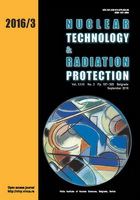
SOIL GAS RADON MAPPING OF MUZAFFARABAD CITY, PAKISTAN

Vol.
XXXI, No. 3, Pp. 197-305
September 2016
UDC 621.039+614.876:504.06
ISSN 1451-3994
Pages: 291-298
Authors: Aleem Dad Khan Tareen, Muhammad Rafique, Kimberlee J. Kearfott, Muhammad Basharat, and Bilal ShafiqueAbstract
Soil-based radon investigations are of value in correlating radon production and its transportation into buildings through the processes of convection and diffusion. Such studies can help in identifying land areas that pose special concerns. We present preliminary results of soil radon gas measurements at 60 different locations in an attempt to map out the geohazard zone of the city of Muzaffarabad. The seismic geohazard microzonation for the area includes five microzones based on different hazard parameters: a very high hazard zone, a high hazard zone, a moderate hazard zone, a low hazard zone, and a safe zone. Measurements were taken with an active radon monitoring system at the depths of 30, 40, 50, and 60 cm below the ground surface. The results obtained were explained by the lithology of the area. Average soil radon gas concentrations were correlated with the depth from the ground surface and indoor radon values for the study area. No significant correlation was found between soil radon gas and meteorological parameters, however soil radon gas increases as the depth from the surface of the ground grows. The results showed a linear relation between soil radon concentrations with depth from ground surface (R2 = 0.9577). The minimum soil radon concentration (68.5 Bq/m3) was found at a depth of 30 cm in the very high hazard zone, the maximum value (53.300 Bq/m3) at a depth of 60 cm in the seismically safe zone. Measured soil gas radon concentrations at depths of 30, 40, 50, and 60 cm were mapped for high, moderate, and low radon concentrations. Elevated soil radon gas concentrations were found in the safe zone, otherwise considered to be suitable for any type of construction.
Key words: radon, soil gas, geohazard zone, lithology, meteorological parameter
FULL PAPER IN PDF FORMAT (1.1 MB)